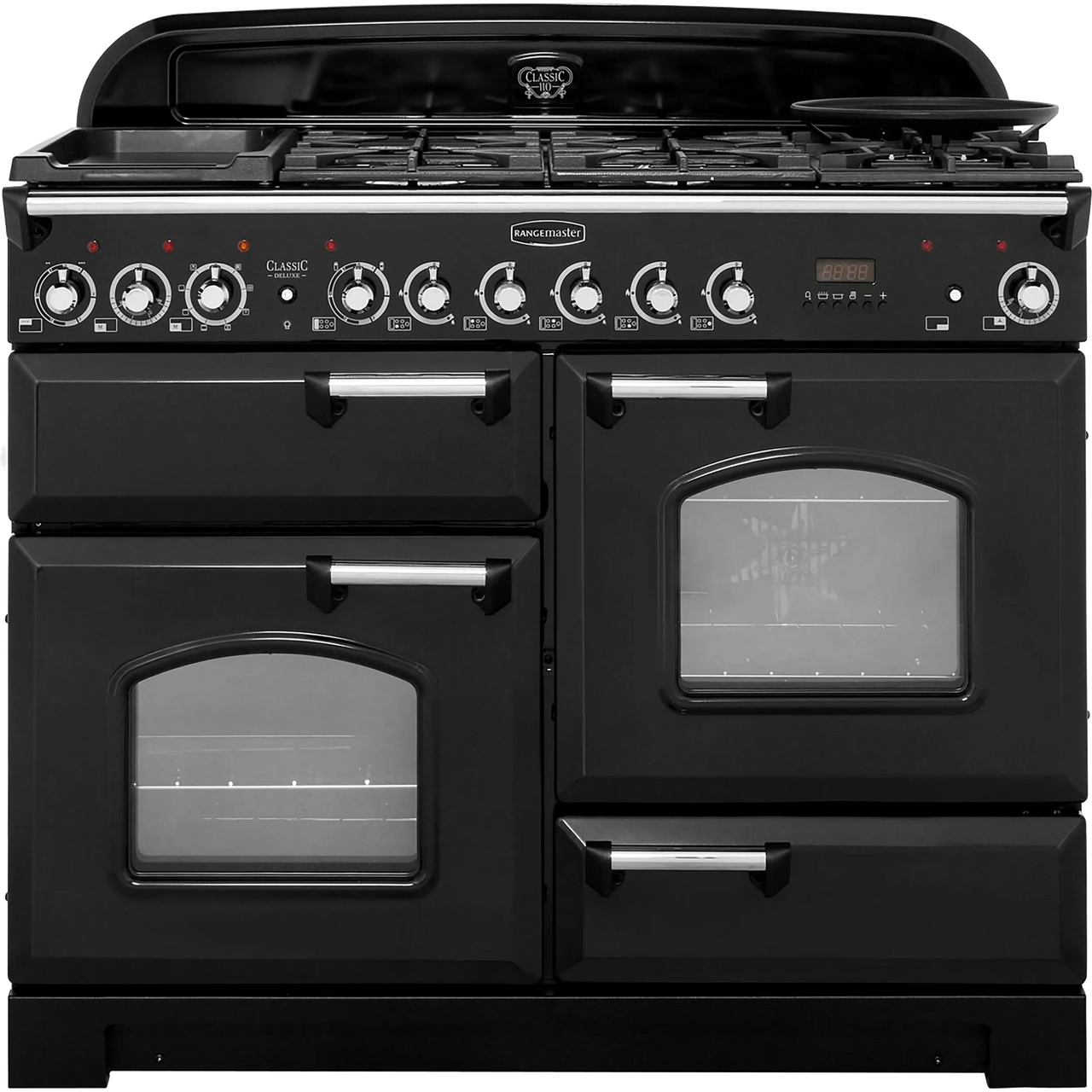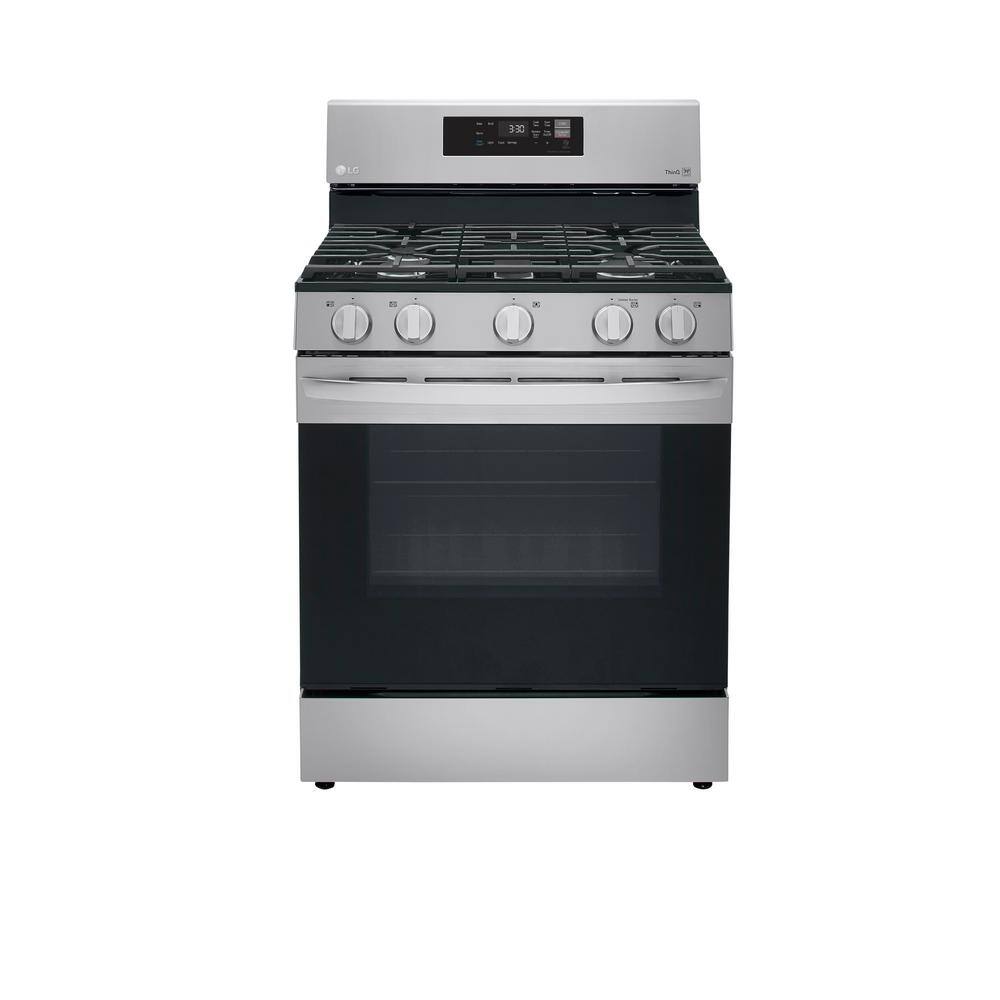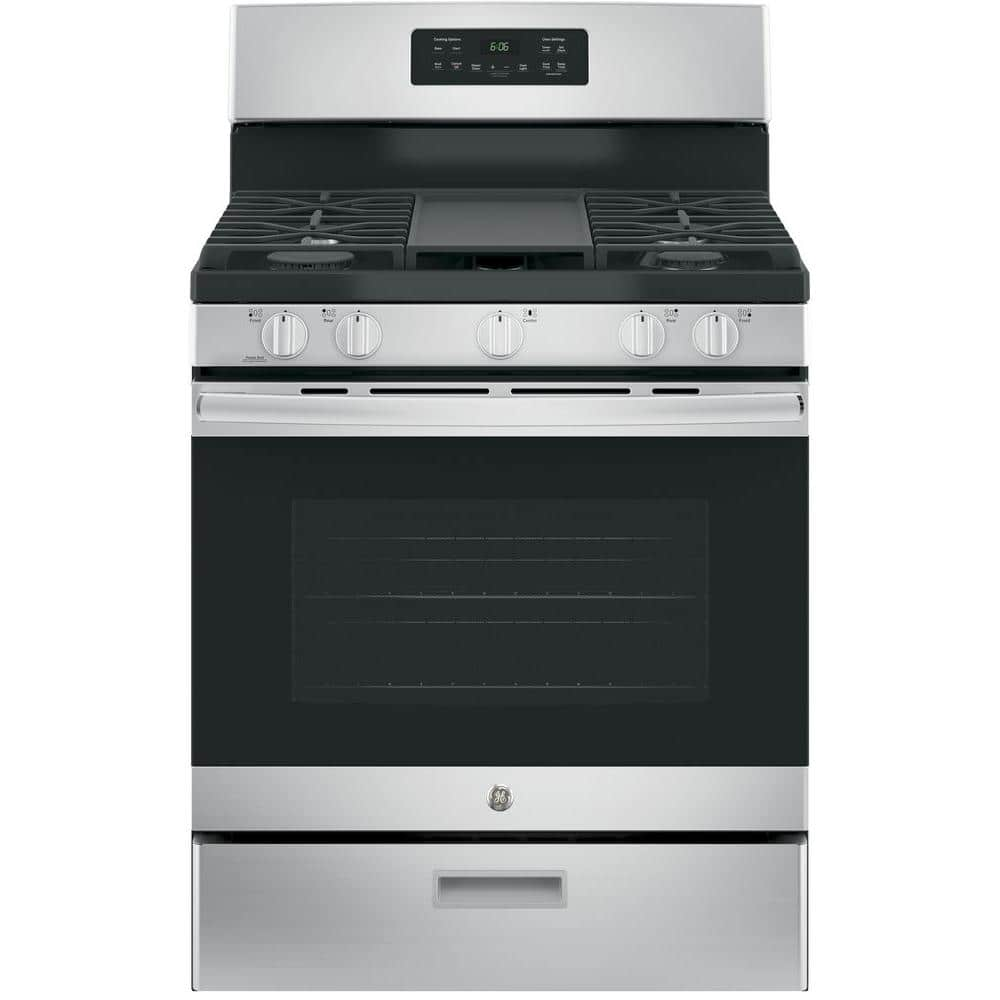GE 30 in. 5.0 cu. ft. Gas Range with Self-Cleaning Convection Oven and Air Fry in Stainless Steel
Air fry healthier, crispier options with no preheat needed. Continuous cooktop provides a large cooking space. An extra-large griddle allows you to cook a lot at once.
At GE Appliances, we bring good things to life, by designing and building the world’s best appliances. Our goal is to help people improve their lives at home by providing quality appliances that were made for real life. Whether it’s enjoying the tradition of making meals from scratch or tackling a mountain of muddy jeans and soccer jerseys, GE Appliances are crafted to support any and every task in the home.
- No Preheat Air Fry – With this air fryer right in the oven, you can cook healthier, crispier versions of your favorite foods. There’s no preheat required and it shortens the cook time because every minute counts
- Edge-to-Edge Cooktop – Continuous, edge-to-edge cooktop give you a large cooking space and can handle any cookware
- Integrated Griddle – This integrated non-stick griddle leads the industry in size and quality, so you can cook a lot of food at once
- Power Boil Burner – This 18,000-BTU power boil element produces intense heat to boil water fast
- Convection – This gas convection oven cooks and browns more evenly, using a rear fan to circulate hot air.
- Self-Clean with Steam Clean – This self-cleaning oven uses optional steam cleaning for light soils to clean the oven cavity with less heat and odor
- Center Oval Burner – This center oval burner gives you a fifth burner and the perfect place to use griddles or odd-size cookware
- Heavy Duty, Dishwasher-Safe Grates – These cooktop grates can be cleaned one of two ways – either in the dishwasher, or on the bottom of a self-clean oven
- Large Capacity Oven – Cook an entire meal at once with a 5.0 cu. ft. oven which provides enough room for multiple dishes
- Optional Roller Rack – An optional roller rack which makes removing heavy or odd-size cookware easy and safe
- Removable Storage Drawer – A full-width drawer provides space for kitchen accessory and cookware storage for added convenience in the kitchen
- Limited 1-year entire appliance warranty
Additional information
| Depth With Door(s) Open 90 Degrees (In.) | 46.25 |
|---|---|
| Oven Interior Depth x Height x Width (in) | 19 x 19 x 24 |
| Product Depth x Height x Width (in) | 28.75 x 47.25 x 30 |
| Range Size | 30 in. |
| Certifications and Listings | Star-K,UL Listed |
| Manufacturer Warranty | Limited 1-year entire appliance |






by Jana
Great purchase , we love it
by Mel
Excellent stove! Took a while to get but worth the wait.
by Adam
Fit perfectly and came as advertised.
by Larry
I really like this stove. The higher output burner is great for when you need that high heat. The oven has the air fry option that we use regularly. Huge upgrade over the old stove.
by Jack
I can’t buy anything without somebody asking for a review. This is the best your going to get.
by Kevin
Works good and it looks good.